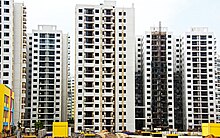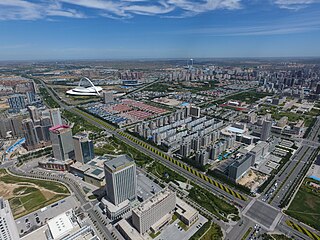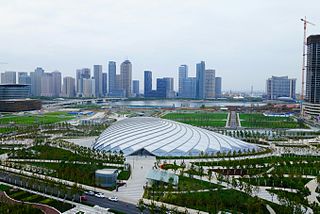Background


The "ghost city" narrative around Chinese urban development first emerged in Ordos Kangbashi. In 2009, Al Jazeera journalist Melissa Chan reportedly came across the newly built Kangbashi district during a separate assignment. Though approximately 30,000 people already lived in the area, she described it as "empty" and labeled it a ghost town. This narrative quickly spread through international media, fueling Western skepticism about China’s economic growth and prompting critics to question the country’s GDP figures, suggesting its rapid development was exaggerated or unsustainable. [14]
However, as noted by author Wade Shepard in Forbes, these early reports failed to consider that Kangbashi was just five years old when Chan visited. Wade argued that building a large urban district and achieving partial occupancy in half a decade should be viewed as a significant accomplishment, particularly when compared to infrastructure projects in Western cities, which can take decades to complete. Despite this, Kangbashi’s rapid growth was dismissed as an overreach rather than appreciated for its scope and pace. From the beginning, Shepard argued, the ghost city label was a simplistic and misinformed perspective. He also pointed out that in 2017, the "ghost city" label had become increasingly hard to apply to Ordos Kangbashi district as it had since further significantly increased its resident population from 30,000 to 153,000 people living there. [4]
Shepard also explained how property values are structured in China plays a role in the creation of underoccupied new developments. "Economically affordable housing" must be lived in by the owner, and can not be bought and sold as an investment. The developer is only permitted to sell "economically affordable housing" at 5% over the cost of construction. By contrast, "commodity housing" can be bought and sold as an investment. Because housing is a physical object, and China's large population guarantees an ongoing demand for housing, commodity housing is considered a more secure way to store money. Except in some Tier 3 and Tier 4 cities, which have different government regulations, "commodity housing" generally sells as an investment. [2] In addition, these homes typically serve as future homes for the buyer's offspring to live in when they get married. [15]
In 2015, photographer Kai Caemmerer observed the unique approach to urban development in China, where cities are first being constructed to a near-complete state before residents are mass introduced, in contrast to the incremental growth typically seen in U.S. cities. [16]
In a 2021 Bloomberg article, Max Woodworth, an associate professor of geography at Ohio State University, noted that China had experienced significant under-urbanization for many years and is now rapidly addressing this issue. Woodworth explained that in 1978, only 18% of China's population lived in urban areas; by 2020, this percentage had increased to 64%. Woodworth indicated that the Chinese government aims to sustain the momentum of urban migration. With strict limits on new arrivals in Beijing and Shanghai, the development of new population centers has become increasingly vital. To enhance urban vitality, the government often facilitates the relocation of government offices and state-owned enterprises to these cities, followed by the establishment of public buildings, schools, and high-speed rail stations, which subsequently attract private investment. [17]
In 2021, Business Insider , reported that in 2020 China had about 65 million empty homes. [18] [19] In the article, academic Xin Sun said in China there is a strong popular belief that real estate is the best way for preserving and generating wealth, leading to great demand for buying property; something the government encourages. [18] The Economist reported that in some areas demand for property greatly outstripped supply, typically in cites. However, at the same time in poorer rural areas few people were buying properties, and in those areas there was a glut of empty houses. [20]
Bloomberg also reported in 2021 that numerous cities including Zhengzhou and Ordos, that had previously been criticized as "ghost cities" in 2010s, have begun to fill up and "stir to life" and become functional cities, and suggested that "China is playing a very long game” when it came to urbanisation. [21] [17]
















